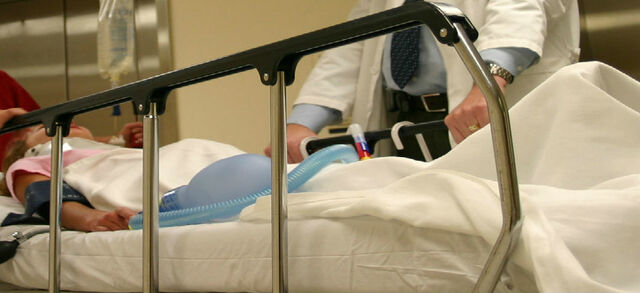
A patient safety watchdog organization gives only a third of St. Louis-area hospitals its top grade for preventing medical errors that can seriously harm patients.
The Leapfrog Group is a national nonprofit organization focused on improving the safety of medical care. Twice a year it provides letter grades (“A” the highest, “F” the lowest) for hospitals in St. Louis and across the country. It just released its Spring 2020 hospital safety grades.
The grades are based on 30 patient safety measurements. Leapfrog asserts that its safety grading system “…is the only rating solely focused on a hospital’s ability to protect patients from preventable errors, accidents, injuries, and infections.”
Patient Safety in St. Louis Hospitals
Just a third of all hospitals nationwide as well as in St. Louis received an “A” grade for patient safety.
Leapfrog has a searchable database of hospitals and their safety grade ratings. There are 27 hospitals listed within a 50-mile radius of St. Louis. Nine of those hospitals were given an “A” grade for hospital patient safety.
Of the 63 Missouri hospitals in the database, 18 – less than 30% - received an “A” grade for preventing medical errors.
The patient safety grades focus on some of the most serious medical errors and appropriate steps hospitals do or do not take to prevent them.
Medical Errors Made in Hospitals
The preventable medical errors made in hospitals spotlighted by Leapfrog include:
- Hospital-acquired infections
- Medication errors
- Surgical mistakes
One type of infection – MRSA – is potentially life-threatening. It is called a “super bug,” resistant to most antibiotics. Leapfrog outlines what the safest hospitals do to protect against these hospital-acquired infections.
As the germ that causes an MRSA infection can be spread person-to-person or through medical equipment, hospital staff should wash their hands after treating patients and be vigilant in cleaning and disinfecting medical equipment, including bed linens.
What Should be Done to Prevent Medication Errors?
Medication errors are potentially very dangerous and highly preventable. Serious medication errors generally involve:
- Giving medication to the wrong patient
- Giving a patient the wrong medication
- Giving a patient medication in the wrong dosage
Hospitals that act responsibly to prevent medication errors, according to Leapfrog, use scannable bar codes on medication packaging that provide accurate information. Those who administer medications should also check patients’ ID bracelets to confirm their identities and their prescribed medication treatments.
Serious mistakes made during or after surgery endanger patient lives. The new hospital patient safety grades pinpoint a few of these serious surgical errors.
One is leaving a surgical instrument or other foreign object in a patient’s body. To prevent this surgical error, Leapfrog says hospitals should develop a procedure to count sponges and other operating tools before and after surgery.
Leapfrog grades how well hospitals treat patients who develop a serious complication post-surgery. Some of these, all potentially deadly, are:
- Heart attack
- Pneumonia
- Loss of kidney or liver function
The organization says that hospitals should foster good communication among healthcare providers and have a plan in place to treat potentially deadly complications following surgery.
If you or a loved one was seriously harmed by a medical error during a hospital stay, an experienced medical malpractice lawyer can investigate to determine what went wrong and pursue justice on your behalf.
The choice of a lawyer is an important decision that should not be based solely on advertisements.
Authored by Gray Ritter Graham, posted in Blog May 26, 2022

 RSS Feed
RSS Feed